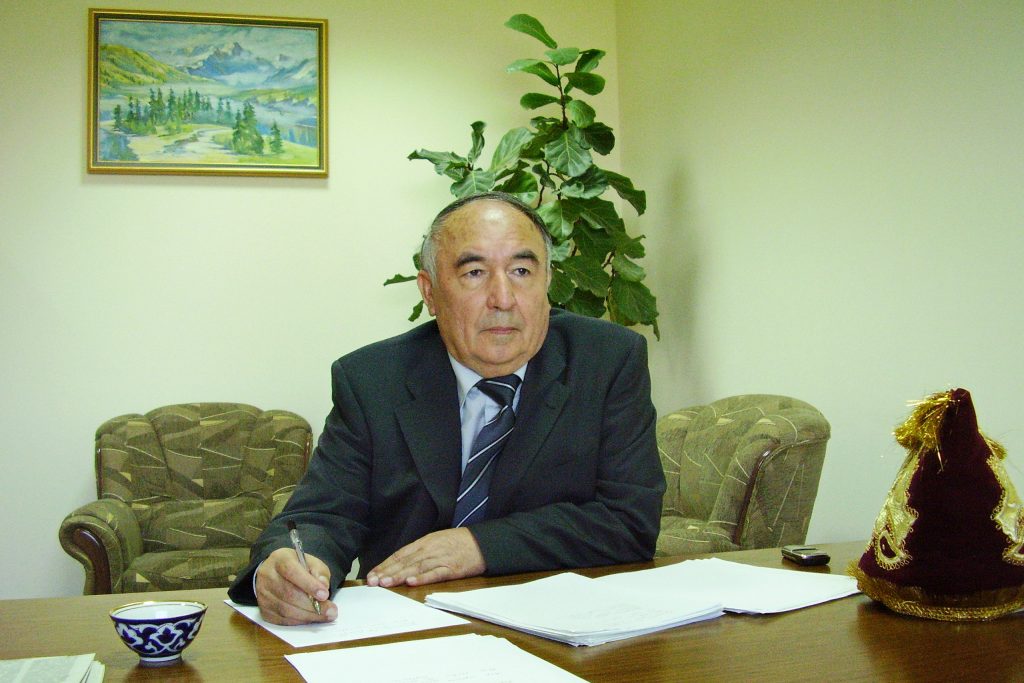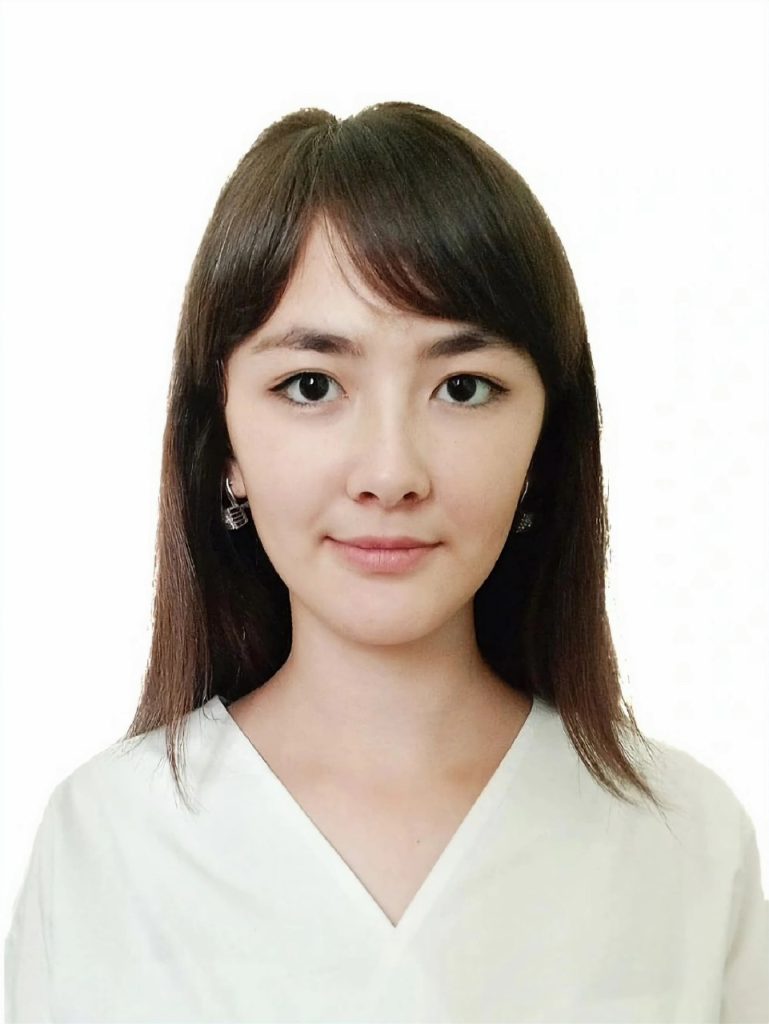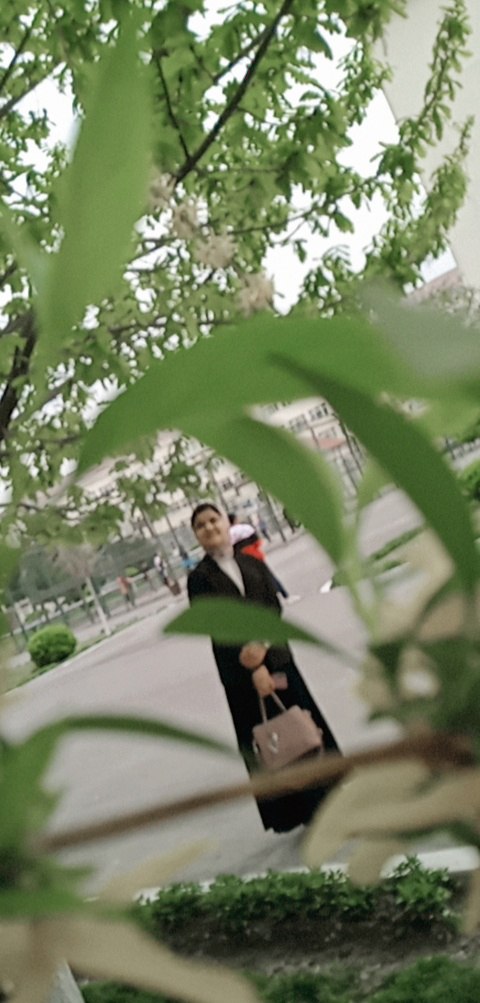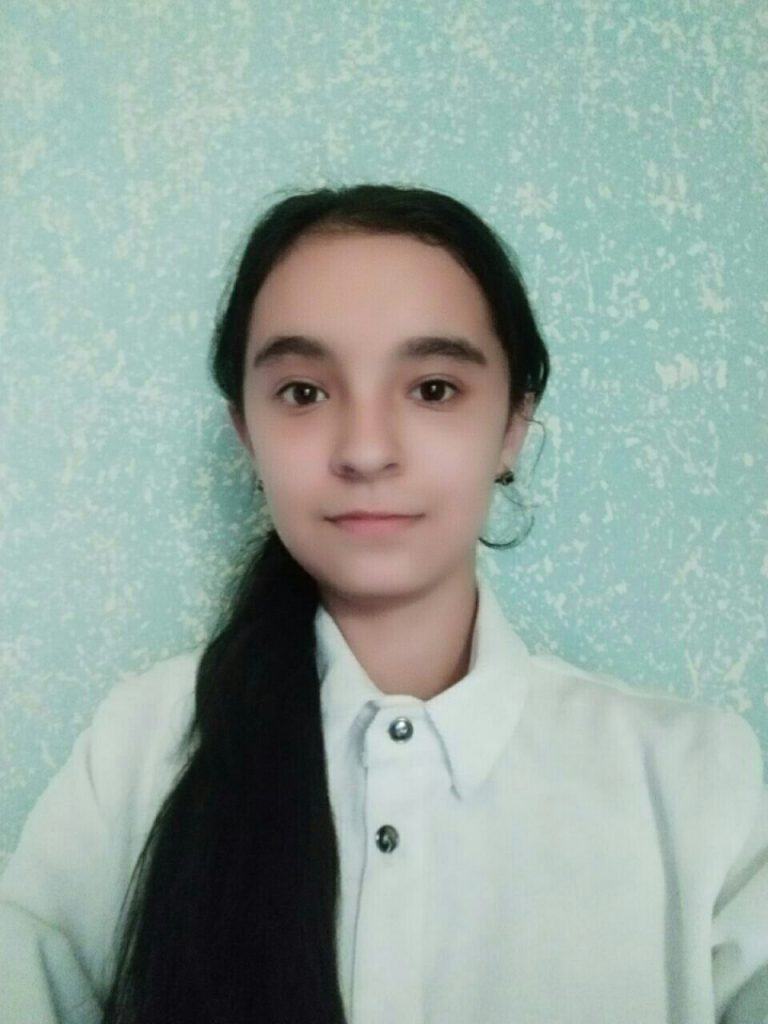Night... quiet, silent, sad Memories wander My crazy spirit is restless Distracted, afraid suddenly Drops anduh, beun, be sas I am with myself This is the breath in which souls enter into battle You struggled, I struggled, I give up.. Suffering, pain, suffering A heavy burden on your shoulders... My heart, kneel! This is breath I'm a torture in your soul! *** Without agreeing with myself I hurt you a lot today Your heart is broken because of me I'm sorry, it's no longer valid I suddenly ask myself a question - Why do you always say such words? My answer does not satisfy me: - It wasn't intentional... It's canceled, I'm tired today... Why am I so sad? My heart, please forgive me Don't hurt my little heart... When luck comes, it comes twice The smile that disappeared. When happiness comes, it comes twice. Holding a flower in his smile... *** To walk around in horse I want to live in a palace. The quietest part of the beautiful castle I want to read in the light... Do I say princess is in my blood? I think, tying my day to my night, The most handsome and intelligent owner of the palace Looking at my father... Etiquette, education, life with peace Teacher, my kind mother. It's getting worse day by day Lament about the most beautiful dreams... Anyway, it's over. God wrote our destiny Whatever he says is what he says Good to know dears Prayers made stand firm... *** Man is demanding Man is an aspirant Man is adaptable Man is a seeker Man is enterprising Man is understanding A big road I went on the highway, my destination is far away I still have a long way to go... I went for a walk in search of happiness, I will definitely find it, it is waiting. *** The winds are stroking my hair, though Jealousy of raindrops comes. The wind makes my hair red If he says to leave, he will... The rainy air, the smell of the soil... The heavenly castle captures my imagination My soul is fresh, I'm in a good mood I'm happy to play in the lap of drops. Money Money makes a person everything He takes away his faith and puts it in the grave... He ordered the execution of conscience Drives and chases the self... *** When the mirror of the heart is gone, No matter how hard you try, it won't work. A heart that hurts from you, give it to you, Smile from the heart and do not smile! Mohichehra Rustamova Uzbek language student at the Faculty of Philology of Urganch State University In 2022, she received the "For Services in the Field of Science" badge and badge, and in 2023, she actively participated in the international festival and became the owner of the "Scientific Researcher" badge. In 2023, the owner of the "Hokim Scholarship", the winner of the republican stage of the "Zomin Seminar-2022" of republican artists, an official member of many international organizations, she has authored books, her articles and creative works have been published in international magazines and newspapers.
Category Archives: CHAOS
Essay from Dilnoza Xusanova

THE PLACE OF ERKIN VAKHIDOV'S CREATION IN WORLD LITERATURE Abstract. In the article, the famous of the Republic of Uzbekistan the work of poet and writer Erkin Vakhidov will be discussed. Our society raising his spiritual life by observing the perfect young generation it is emphasized that they are inextricably linked. The works of classic writers and poets one of promoting learning at all stages of education and this affects spiritual maturity and personal results. Key words: Lyrics, education, literature, collection, literary genre. Uzbek literature in the context of world literature That is, researching it as a whole with world literature is a new one and provides a rich opportunity for perspective and interpretation. Erkin Vakhidov's nature, life sophistication, the rich spiritual world of man, and creativity, together with singing in praise of his work to social injustice, goodness against tyranny, and evil, firm in the name of beauty, led to a fierce artistic struggle. This is typical of Erkin Vakhidov's work. In this context, his works are related to Turkic peoples as well as German, French, Russian, English, Urdu, Hindi, Arabic, and other languages spoken in different countries, as reflected in the translations made. As a result, his works are gaining the attention of fans, not only of Uzbek literature but also of world literature. Erkin Vakhidov, the beautiful and unique qualities of our people, high flights typical of his artistic thinking, always to our language the grace that gives beauty is unique is our national poet who used it in forms. Certain literary properties are the heart of other people's The creative service of translators is decisive in adding to the treasury becomes important. After achieving independence in the Republic of Uzbekistan, it became obvious that in the educational sphere it was necessary to revive national customs and traditions and cultural and spiritual values. The slogan "Uzbekistan is a state with a great future" determines the need for the development and reform of all spheres of life in our society. We must not forget about the direct connection between the education of the young generation and the future of the entire state. In modern education, new methods and techniques, called interactive, provide efficiency in the study of literature, including in the study of the work of the writer and poet Erkin Vohidov. Erkin Vakhidov, the complex historical path of our people, expressing the pride and dreams in his heart vividly and artistically, is a nation that has shown the high status of its value to the world. We can say that Uzbek literature is a world study, and research together with literature is an important issue on the agenda of our literary studies. His contribution to our literature of scientific realization, like Erkin Vakhidov's, to reveal the qualities characteristic of great figures in a reasonable and convincing manner, will serve. This is a prospective and large-scale study, and although they live in different parts of the world, they are Uzbek. There are also scientists conducting research on literature; they will, of course, contribute. It is noted that the development of the spiritual life of our society is inextricably linked with the formation of a perfect young generation. The study of the works of classical writers and poets at all stages of education is one of the most urgent tasks, and this has a significant impact on spiritual development and personality formation. Erkin Vakhidov tries himself in different genres—epic, journalistic—but more and more gravitates towards song. Many of his poems are known as songs performed by Uzbek singers. Later, the work of Erkin Vakhidov is noticeably different from his earlier works; he is freed from his previously inherent laconicism and abruptness towards smoother intonations. During this period, the poetry collections "Love" (1976), "Living Planets" (1978), "East Coast" (1982), "Message to Descendants" (1983), "Insomnia" (1985), and "Suffering" (1991) were published, as was "The Bitter Truth is Better" (1992). Erkin Vakhidov's authorship belongs to the poems "The Dream of the Earth", "The Poem Written in a Tent", "Devotion", "Rise of the Immortals", "The Conqueror and the Barber" and the plays "The Golden Wall", "The Istanbul Tragedy" and "The Second Talisman". The poet's poems went to the people. They were also translated into Russian. Today, each line of Erkin Vakhidov's poems is interpreted under a different sign – eternity. After all, when people leave, especially poets, not only their portraits change, from which they seem to look at their contemporaries in a different way, but the words they have written are seen differently, the meaning of which penetrates even deeper into the soul. We live easily, without noticing seconds. We laugh at carelessness in captivity. And the pendulum – it shakes its head, blaming this carelessness. He seems to be telling us: – It will be too late. Hurry for a second, anyone. Everything has its own term. And I wouldn't have to after regret them by shaking your head. . (Translated by S. Ivanov). Erkin Vakhidov translated Goethe's Faust, poems by S. Yesenin, A. Tvardovsky, M. Iqbal, R. Gamzatov, G. Emins and many other poets into Uzbek. Carefully preserving traditions, the author also conveys his original perception of love. In the poem "The Spring", the reader is presented with a girl sitting by the spring. Starting from a real episode, the poet creates a lyrical love story, or rather, expectations of love. The love of the lyric hero of the poem is like a pure spring emanating from the depths of the earth. The heroine of the poem is both sublime and simple in anticipation of a bright feeling. The poem "Revolt of the Spirits", by definition of literary critics, is considered the pinnacle of E. Vakhidov's creativity. Literary critic U. Normatov calls "The Mutiny of Spirits" a philosophical, tragic, heroic poem: "Mutiny of Spirits" is a kind of innovative work in its form. It consists of a synthesis of the poetic form of rhythm, emotionality, different colors symbolize the life episodes of the legend, etc." Subsequently, the poet's collections are published almost annually. Other poets highly appreciated the work of Erkin Vakhidov. For example, Robert Rozhdestvensky wrote that his works are multilayered and polyphonic. A future member of the Union of Writers of Uzbekistan, Erkin Vakhidov traveled all over the vast country, was abroad: in Berlin, Delhi, New York. And from all his trips, he brings works written under the impression of the new and interesting. Erkin Vakhidov is not only a poet but also a skilled translator. As the owner of a unique talent who was able to make a great contribution to Uzbek literature, we can say that. Get acquainted with the biography of the poet. As you know, he has been a translator since his student days, and you can find out that it has started. And this is to the poet's own people, introducing the air of world poetry and directing young poets artistic-aesthetic thinking through world poems, a long and long way to perform high tasks such as feeding. It's a sign of how seriously he takes hard work—no exaggeration. An important wing of Erkin Vahidov's creative research is the development of his art of Uzbek translation, which is directly involved in multifaceted activities. Erkin Vahidov is a great talent in Uzbek literature; he raised the field of translation to a new level; he himself translated and enriched the works with romantic melody, musicality, and charm, which made Uzbek poetry more colorful and attractive. The poet's talent and many years of painstaking research came to the world as a product, created in different languages around the world. The translation of the works not only adds to the creative path of the poet; rather, it is a rare and rare item of the spiritual treasure of Uzbek readers, creating the ground for the payment of the sacred masterpieces. The study of the works of classical writers and poets at all stages of education is one of the urgent tasks and this has a significant impact on spiritual development, personality formation. Erkin Vakhidov entered literature as a child, but a big one became the ocean. Love for the motherland, its boundless expanse, mother Faith in the bright future of the country is the most important part of Erkin Vakhidov's work and remains an important aspect. The place and role of the rich and indelible works created by Erkin Vakhidov in world literature are incomparable. His works encourage people to practice religion, kindness, and humanity. The creator shows the beauty of life in his unique creation. With his laudatory poems, he was able to irrigate hearts thirsty for literature. The world is not only amazed by its diversity and wealth of miracles; it also strives to gain deep understanding and knowledge of its secrets. Erkin Vakhidov's personality is like a world inside another world, and his poetry is another literature within literature. A poet or nature pen on love and or social and other topics shares his philosophical thoughts on the fate of society and the future of man. His poems and epics, not just in terms of subject matter, genre, and style, but in a spirited, intense, and at the same time, distinguished by their innocence and gaining special importance, are enough. Erkin Vakhidov, whose centuries-old traditions of our classical poetry are properly continued and given a special polish, is a creator. References: 1. Huzhamberdieva Sh. Izuchenie tvorchestva Erkina Vohidova v obshcheobrazovatel'nyh shkolah na osnove sovremennyh pedagogicheskih tekhnologij // Molodoj uchenyj. – 2015. – № 2 (82). – S. 566-568. 2. Vahidov E. Stihi i dramy. – Tashkent: Fan, 1985. 3. Vohidov E. Izbrannoe. 2 toma. – T.: Izdatel'stvo «Literatura i iskusstvo», 1986. 4. Huzhamberdieva Sh. Kavkaz v tvorchestve Erkina Vahidova // Molodoj ucheniy. – 2016. – № 10 (114). – S. 1509-1510

Poetry from Farrukh Amirov
My literary portrait I read poetry until morning Meeting, love, sweet sadness. In front of my eyes are bad legs, Discrased helpfull grasses. I read poetry of songbirds About free flight. Afghan birds in front of my eyes, It pases away in a withered tree. I read poetry my grandfather Alpomish! I swear, we are the sons of the Alps! There is no Kuntugmish in front of my eyes, Neither Rustam nor Gorogli. I read poetry higher emotions: Faith, honesty, kindness. Brothers and sisters in front of my eyes, They do not show mercy to each other. I read poetry the world is bright. I'm here, the sky is clear. It is clear before my eyes, A world of steppe wolf I read poetry again and again. Loud claps are played. I have eternal applause in front of my eyes, Curse the father of clappers. I read poetry, deceiving the nation, Close your eyes to everything. I do not tremble on any page, I read poetry and call myself a poet... Farrukh Amirov Young uzbek poet
Essay from Makhfiratkhon Abdurakhmonova

Steps to Success (Story of Makhfiratkhon Abdurakhmonova)
Makhfiratkhon Abdurakhmonova, born in 2004, possessed an extraordinary passion for learning and a burning desire to make a positive impact on the world.
Makhfiratkhon’s journey towards greatness began at a tender age when she discovered her love for the English language. At just four years old, she started teaching English to children in her neighborhood. Her natural talent and enthusiasm for teaching quickly caught the attention of international educators.
By the age of eight, Makhfiratkhon had already achieved an impressive list of accomplishments. She was certified as a B2 level English teacher according to CEFR standards in Uzbekistan. Her thirst for knowledge led her to obtain various international certifications, including International ESOL-B2 and SAYLOR ACADEMY-C1.
Not only was Makhfiratkhon an academic prodigy, but she also excelled in extracurricular activities. She became a member of numerous international organizations and attended over 50 conferences worldwide. Her dedication and hard work did not go unnoticed, as she received recognition as a global youth ambassador.
Makhfiratkhon’s dreams continued to come true as she won scholarships to prestigious universities such as North Texas University, Barry University, and St.Johns University. She was awarded the University Incentive Scholarship, which further fueled her determination to succeed academically.
In addition to her academic pursuits, Makhfiratkhon was actively involved in philanthropic endeavors. She served as a Child Rescue Ambassador for IQRA Foundation and as a Child Advisor for Glory Future Foundation. Her passion for environmental conservation led her to become an ambassador for the renowned organization ‘Greenpeace.’
Makhfiratkhon’s achievements extended beyond academics and philanthropy; she was also recognized for her skills in diplomacy and international affairs. She participated in the Asia World Model United Nations (AWMUN) Offline Conference, where she excelled and won an internship opportunity.
As a Fellow member of ERU and a member of the ISRES, Makhfiratkhon was always at the forefront of global issues. Her dedication to making a positive impact on society led her to translate several books and become an ambassador for various organizations, including SGAP Leaders and Global Friends Club.
Her passion for education also shone through as she completed courses from prestigious universities such as the University of California and Stanford University. Makhfiratkhon’s commitment to self-improvement knew no bounds, as she also attended conferences in Thailand, Malaysia, and the United Arab Emirates as a delegate of ‘Best Diplomats.’
Despite her numerous accomplishments, Makhfiratkhon remained humble and grounded. She volunteered for organizations such as ‘Quyosh Nuri’ and worked tirelessly as an official member of IAAC and Gurukshetra Foundation.
With each passing day, Makhfiratkhon’s influence grew stronger. She became an ambassador for IHRC in Uzbekistan and coordinated various initiatives aimed at promoting peace and human rights. Her dedication to her country’s youth led her to become the Country President of Iqra Foundation Global in Uzbekistan.
Makhfiratkhon’s passion for writing bore fruit when she authored her book titled “A Shining Star.” Through this book, she hoped to inspire others to chase their dreams relentlessly.
As time went on, Makhfiratkhon continued to add feathers to her cap. She became a member of Juntos Por Las Letras and UN-ONGO, further solidifying her status as a global leader.
Makhfiratkhon’s story is one that inspires countless individuals around the world. Her unwavering determination, thirst for knowledge, and commitment to making a positive difference have made her a true shining star. Through her dreams and aspirations, Makhfiratkhon continues to prove that with hard work and dedication, anything is possible.
Poetry from Sayani Mukherjee
Meeting A perfect weather To remember the faultlines The vivid picturesque Melancholic Whispers that hide among the trees The holy chantings of long waited gazes The turmoil of openings The narrow road open wide Bit my upper lipped sorrow My zigzaged cashmere sweater I wore for the longest time Myself a bohemian wise myself again Wrapped around my collarbone Surpassed my fears the goodness of Travelling around My split seconded tornadoes my other toed Lipsy sounds I know a perfect weather Creation's bemused journeying to the very South My meeting with Goodness with God Neutrality at the crowned head My perfect weather A known rendezvous a perfect meeting.
Essay from Abdusodiqova Fotima Adham qizi
Sometimes when we are in trouble, when our pain is crushing our heart, we want to feel relieved by telling someone about it.
Because a human being is born with feelings of anxiety, fear, and sadness in his heart. But we do not think that the people who are listening to us have bigger problems than yours, that is, your speech is almost not interesting to them.
Most of them don’t want to hear you, but most of them are happy that you are a pain. It’s a bitter truth.
Let’s not tell our pain to those who suffer like us, but to Allah, the Healer of all hearts. After all, He sent these pains so that my servant would come closer to me, so that he could be relieved by telling me his pain, so what are we going to do by knocking on the wrong doors?
As long as we say yes, it is not necessary to stand in queues for the reception of our Doctor, if we raise our hands together to the sky, He will hear us and answer us…
Poetry from Farkhodova Nodira

A person who excels in sports! Sports that keep us upright, Takes to the heights, Set a record in every field Athletes win always! Gyms are waiting for us, It only requires worked, A chance for a boy or girls The doors are opened! A person who excels in sports, In training full of energy, Get up early every day Runs, eats healthy! Sports-health guarantee, Make the words a slogan, To do sports Consider it a glory for the nation! Farkhodova Nodira Ulugbek's daughter was born on November 14, in 2008 Shafirkon district of Bukhara region. She is a student in 9 th grade of 38th Specialized State General Education School of the Shafirkon district public education department. She is a young amateur who is interested in writing poetry. There are more than 30 poems in total. "A person who excels in sports", "My Motherland", "My mother language is my pride and joy" and many other poems were published in newspapers and magazines. In addition, she took pride of place in several contests.
